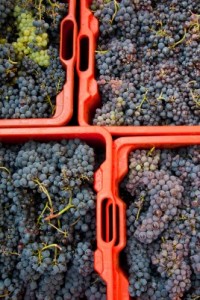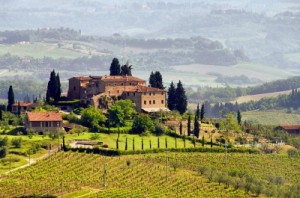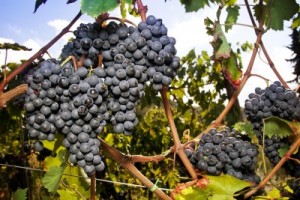Guest Author Don Kinnan, CSS, CWE tells us the story of Brunello di Montalcino
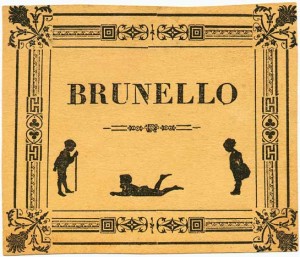 The story of Brunello embodies man’s quest for perfection. It begins with the discovery of a special grapevine on a steep Montalcino slope in 1842. That vine’s subsequent propagation by its founder, Clemente Santi, resulted in the creation of the Brunello wine.
The story of Brunello embodies man’s quest for perfection. It begins with the discovery of a special grapevine on a steep Montalcino slope in 1842. That vine’s subsequent propagation by its founder, Clemente Santi, resulted in the creation of the Brunello wine.
Today, Brunello is considered one of Italy’s greatest wines and a supreme example of Sangiovese at its best. It has also become Italy’s most recognized premium wine, internationally. With a total production of 750,000 cases (9L), 65% finds its way into the world’s finest restaurants and connoisseur wine cellars. The United States has become the largest importer of Brunello, embracing 25% of the total production. Brunello’s international prominence was recognized by the Wine Spectator when it was selected the “Top Wine of the Year” in 2006.
Now, the rest of the story…
The Place: The Montalcino zone takes its name from the town, which sits high on a hill as a fortified citadel with commanding expansive views in all directions. The zone encompasses 8,000 acres of vines, 4700 of which are dedicated to Brunello. The name, Montalcino derives from the Latin, “Mons Ilcinnus”, or mountain of holm oak. These oak trees grace the commune’s logo. Vineyards, while extensive, only cover 15% of the land, with forests, pastures, and fields of grain making up the rest. Indeed, Montalcino is like an elevated island amidst a sea of undulating wheat fields and pastures. The scenic beauty of the place won it a coveted UNESCO World Heritage Site award in 2004.
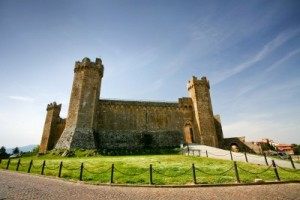 Lying some 27 miles south of Siena and 27 miles east of the Tyrrhenian Sea, Montalcino enjoys a much warmer and drier climate than its Chianti Classico neighbor to the north, and Montepulciano to the east. This, together with diverse soils (including rocky “galestro,” limestone, marl, clay, and sand) make for growing conditions which consistently ripen its finicky Sangiovese grapes earlier the either Chianti Classico or Montepulciano. In Montalcino, harvest is normally completed by late September, usually before the arrival of the October rains.
Lying some 27 miles south of Siena and 27 miles east of the Tyrrhenian Sea, Montalcino enjoys a much warmer and drier climate than its Chianti Classico neighbor to the north, and Montepulciano to the east. This, together with diverse soils (including rocky “galestro,” limestone, marl, clay, and sand) make for growing conditions which consistently ripen its finicky Sangiovese grapes earlier the either Chianti Classico or Montepulciano. In Montalcino, harvest is normally completed by late September, usually before the arrival of the October rains.
The Montalcino Zone resembles a square formed by 3 perimeter rivers: the Ombrone on the north and west, the Asso on the east, and the Orcia on the south. It rises from the perimeter to a crest at the Poggio Civitella (2168 ft), a short distance south of the town, Montacino. There are presently four notable wine production areas.
- Just southeast of the town, the highest vineyards in the zone are located on steep terrain at an elevation of 1,300-1,600 feet. The site’s cool conditions favor slow ripening, producing wines that are more austerely structured, but are very age-worthy. Biond Santi’s “Il Greppo” estate is located here.
- Northeast of the town, on lower slopes, near Montosoli and Canalicchio, the terroir allows the wines to show fuller, riper qualities to complement their structure.
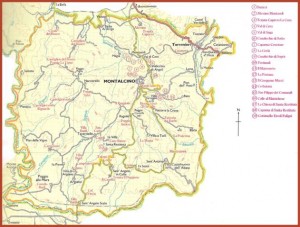 Further north, toward the perimeter of the zone and at slightly lower elevations, the soil contains mainly clay with deposits of marl and sandy limestone. Areas such as Altesino and Catiglione del Bosco produce a more forward style of Brunello in this area.
Further north, toward the perimeter of the zone and at slightly lower elevations, the soil contains mainly clay with deposits of marl and sandy limestone. Areas such as Altesino and Catiglione del Bosco produce a more forward style of Brunello in this area.- Recent plantings in the southwest corner of the zone, near Sant’Angelo in Colle, Argiano, Pian della Mura, and Camigliano, have produced impressive wines with balance and structure. Here, sandy clay soils are often mixed with limestone and “galestro” at the higher sites. This area is closest to the sea and has a warmer microclimate.
The Grape: The name Brunello, meaning “the brown one,” came from the description of the Sangiovese Grosso grapes at harvest time – a dark colored, dusky brown berry. Brunello was the local name given to this type of Sangiovese Grosso, originally identified in 1842 by Clemente Santi. Today, the term is officially reserved for the name of the wine. Sangiovese grown in Montalcino has comparatively thicker skins, compared with grapes grown in other regions, and excellent anthocyanins. Both of these factors contribute to Brunello’s deep tannic structure and rich hue.
Sangiovese is Italy’s most planted single grape variety. It comprises 67% of the Tuscan vineyard acreage and is the main grape in 25 DOC(G)’s of Toscana. Sangiovese is an ancient grape, believed to have resulted from a spontaneous crossing during the Etruscan period. Recent DNA evidence reflects its parentage as a crossing between Ciliegiolo and Calabrese di Montenuovo.
However, there is significant diversity within the grape variety. Sangiovese tends to be genetically unstable and very adaptable; thus, many clones exist. Banfi Vineyards has documented over 600 versions of Sangiovese on their estate alone! Currently, as a result of extensive clonal research trials, the best clones are being propagated. Most estates are using multiple clones in order to add better balance and more complexity to their wines.
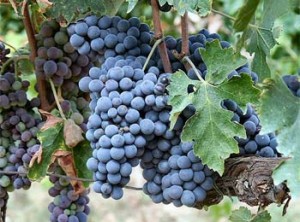 The Wine: Brunello di Montalcino projects an image of majesty and mystery that heightens its allure. This aura was cultivated by the Biondi Santi family. For 100 years, they were the only producers of the wine. The Biondi Santi estate “Il Greppo,” where Brunello was born, has been called Italy’s first “grand cru”.
The Wine: Brunello di Montalcino projects an image of majesty and mystery that heightens its allure. This aura was cultivated by the Biondi Santi family. For 100 years, they were the only producers of the wine. The Biondi Santi estate “Il Greppo,” where Brunello was born, has been called Italy’s first “grand cru”.
However, the wine remained somewhat of an Italian secret until the 1960’s, when word began to spread about the tastings of the extraordinary Biondi Santi vintages of 1888 and 1891. Soon, the wine world turned its attention to this special place and its remarkable wine. The Biondi Santi family, led by Franco and his son Jacopo, carry the flag and continue to produce age-worthy Brunello at the family estate.
A growers’ consortium was established in 1967, and has become one of Italy’s most effective with 98% of today’s 208 producers being members. The consortium has guided a smooth growth in production, while advancing quality standards.
There is, however, growing internal controversy. Some “modernist” producers would like to shorten the 4-year aging requirement prior to release of the wine. Some also argue for the right to use small amounts of non-Sangiovese grapes. These changes are opposed by the “traditionalist” producers who have successfully, thus far, resisted these changes; aside from agreeing to reduce the required time in oak from 4 years to two years.
The Future: The path to wine stardom for Brunello has been like a “shooting star.” The influx of quality investment over the past 50 years continues and serves to accelerate and reinforce its meteoric rise to prominence. There are no “industrial” producers among its wine estates. Although there have been a few bumps in the road, the prospect for continued success is excellent.
Click here for the study aid: Brunello Fast Facts
 Donald P. Kinnan, CSS, CWE has been in the fine wine trade for over 30 years. In 1985, after a successful military career, he joined Kobrand Corporation as a sales manager and, in 1992 was promoted to Director of Education. As such he was responsible for Kobrand’s wine and spirits education programs nationwide for over 20 years. Don is a long-time member of the Board of Directors of the Society of Wine Educators and currently serves on the organization’s Executive Committee.
Donald P. Kinnan, CSS, CWE has been in the fine wine trade for over 30 years. In 1985, after a successful military career, he joined Kobrand Corporation as a sales manager and, in 1992 was promoted to Director of Education. As such he was responsible for Kobrand’s wine and spirits education programs nationwide for over 20 years. Don is a long-time member of the Board of Directors of the Society of Wine Educators and currently serves on the organization’s Executive Committee.
A frequent top-rated presenter at the Annual SWE Conference, he will be co-presenting “Barolo vs Brunello – A Clash of the Titans” on Friday, August 2nd at this year’s Conference in Orlando.
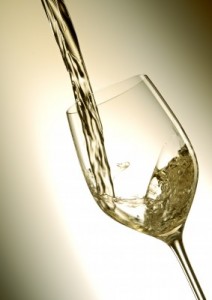 Many people are put off by wine jargon and by certain actions that people take when pouring a wine, whether it be decanting a wine or preparing wine glasses. While it is true that some people just like to put on a show, in many cases all of the pomp and circumstance actually has a practical purpose! Most of us would agree, for instance, that decanting a wine allows the wine to breath and can bring out the bouquet of a “closed” wine.
Many people are put off by wine jargon and by certain actions that people take when pouring a wine, whether it be decanting a wine or preparing wine glasses. While it is true that some people just like to put on a show, in many cases all of the pomp and circumstance actually has a practical purpose! Most of us would agree, for instance, that decanting a wine allows the wine to breath and can bring out the bouquet of a “closed” wine.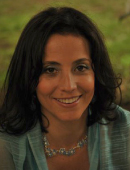 Susannah Gold, CSW, CSS, has been in communications for 18 years. Formerly a journalist for Dow Jones Newswires, Susannah has worked in PR agencies, in-house and on her own. In 2007, Susannah decided to marry her communications and wine interests and the result was Vigneto Communications, a boutique public relations, marketing and educational consulting firm specialized in the food & wine industry. Susannah has worked with numerous wine importers, producers, and institutions such as Vinitaly, Slow Wine, and numerous retail wine stores.
Susannah Gold, CSW, CSS, has been in communications for 18 years. Formerly a journalist for Dow Jones Newswires, Susannah has worked in PR agencies, in-house and on her own. In 2007, Susannah decided to marry her communications and wine interests and the result was Vigneto Communications, a boutique public relations, marketing and educational consulting firm specialized in the food & wine industry. Susannah has worked with numerous wine importers, producers, and institutions such as Vinitaly, Slow Wine, and numerous retail wine stores.




